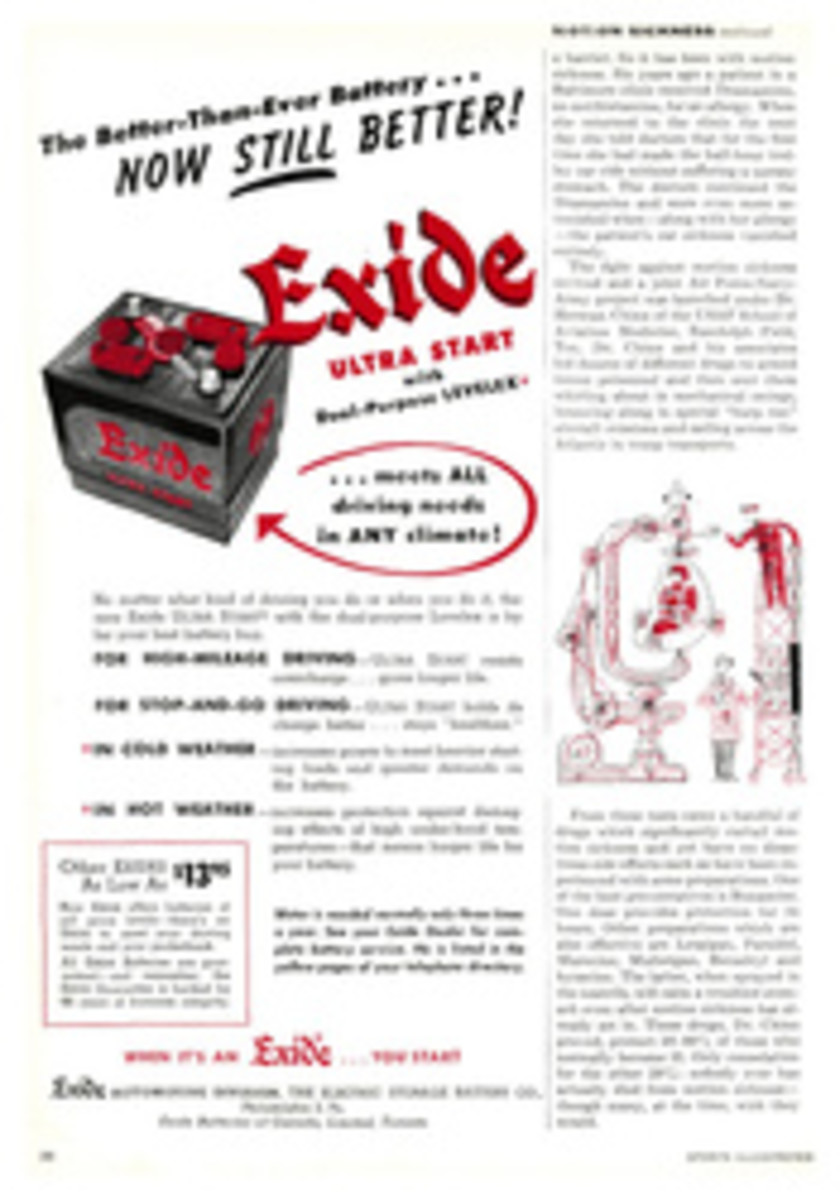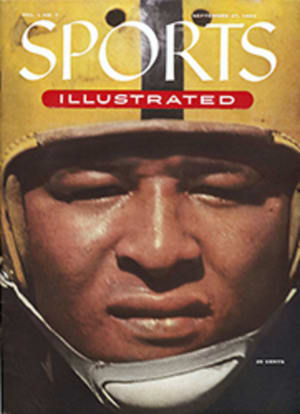
YOU SHOULD KNOW: if you are getting a bicycle
The new bicycle age
You may not know it, but you are living in a new age of bicycling. Today there are about 22,000,000 cyclists in the U.S., roughly ten times as many as in the gay and bicycling 90s. The popularity of bicycles is immense and their functions are varied. They will take you almost anywhere—to work, to school or to many wonderful places on cycle tours. This year American cyclists, pedaling about 400 power strokes to the mile, will travel more than seven billion miles, the equivalent of 240,000 trips around the earth at the equator.
All kinds of bikes...
When the first American bicycle was built in 1877 at Hartford, Conn., it sold for $313. Today bikes can be bought for anything between $25 and $90, and come in an infinite variety of colors, sizes and styles. For all their variety, bikes can be classified roughly into two types—standard and lightweight.
...for all ages
The standard model, made of welded heavy steel tubing and equipped with balloon tires, has certain advantages for children. It is durable and can take rough pounding that youngsters are apt to give it. It comes equipped with the regulation coaster brake, and, in junior sizes, usually costs less than the lightweight.
The lightweight is a European bike. It was re-introduced to this country after the war and has enjoyed immense popularity, particularly among those who like cycle touring. Three-speed gears and reduction in weight by nearly 50 percent over standard models make the lightweight the easiest bike to ride. A minimum expenditure of energy will take you a maximum distance. Most models are equipped with hand brakes, but for children who can't handle these some coaster-brake lightweights are available.
Get a good fit
Proper fit of a bicycle is very important for children. Never get a bike for your youngster to "grow into." When children are learning to ride, they must have an exact fit so that they can control the cycle easily. Standard bicycles come in four sizes, according to wheel diameter: 16 inches for ages four to six, 20 inches for ages six to eight, 24 inches for ages eight to eleven and 26 inches for all ages over eleven. On the two smaller sizes, outrigger balancing wheels are available.
Learn the rules
Before you take to the road, familiarize yourself with all the bicycle regulations in your locality. Most places have bike ordinances and regular procedures for registering and licensing bikes. The police department is usually in charge of these. Consult them for complete details.
Ride safely...
All bike riders would do well to memorize these basic safety rules:
1. Observe all traffic regulations, signals and signs.
2. Ride single file to the right at a safe distance behind vehicles.
3. Display a white light in front, a red light or reflector in the rear at night.
4. Use a signaling device, such as a horn or bell, to warn of your approach.
5. Give pedestrians the right of way and avoid riding on sidewalks.
6. Look out for cars pulling into traffic lanes, and watch for opening doors on parked cars.
7. Never hitch on other vehicles or race or stunt in traffic.
8. Never carry riders. Don't carry parcels that obstruct your view.
9. Keep your bike in perfect running order, especially the brakes.
10. Slow down at intersections and look both ways before crossing.
11. Use proper hand signals for turning and stopping.
12. Ride in a straight line. Don't weave or swerve suddenly in traffic.
...and take it easy
Take it easy if you are a novice rider or taking up cycling again after a layoff. Give your muscles time to limber up and get used to the exercise. You'll go farther with less effort if you pedal evenly with a steady rhythm. For proper pedal action, place the ball of the foot on the pedals and flex your ankles at the top and bottom of the stroke. Keep an even tension on the chain. Don't let your shoulders wobble or it will make the bike unsteady. Look straight ahead, holding your head still and gripping the handle bars naturally. Keep the saddle in a comfortable position to avoid cramping your legs. Most riders adjust the saddle so that the heel rests lightly on the pedal at the bottom of the stroke, with legs fully extended.
Care for your bike
Be good to your bike and it will give you years of pleasure. Simple care will keep it in good running order. Lubricate wheel and pedal bearings regularly with a light oil, cleaning them beforehand with gasoline or kerosene. Oil the chain links frequently to keep them flexible and so prevent slippage on the sprocket. Wipe off water and mud to prevent corrosion. Have your brakes cleaned and checked often by your bicycle service agency. It's best to have your bike inspected by trained bicycle mechanics twice a year. In most cases, the inspection is a free service.
On tour
For cycle tours, you'll want a lightweight touring bike with small tires (1.375-to 1.5-inch width) and three-speed rear hub. The size of the bike frame depends on your size: 21 inches for persons under five feet nine inches tall, 23 inches for five ten to six feet and 24 inches for the six-footers. Travel light, carrying all equipment in bike saddle bags over the rear wheel where they won't get in your way. Try to keep the weight of your equipment under 25 pounds if possible. You'll be glad you did when you start climbing hills.
What to wear
Touring cyclists will do well to wear sweater and shorts for daytime riding, but jacket and head covering should be on hand in case of sudden weather changes and cool evenings. For winter touring, ski trousers are excellent, because they have no loose cuffs to catch in the chain. Wear heavy socks in all seasons and roomy underclothing that will allow free movement. Regular cycling shoes are highly recommended. They are properly balanced and built so the foot will be better held for the pedaling motion.
What to eat
You'll need plenty of nourishing food on tour, and you'll need it often. It's good practice to break up your ride by eating a little every two or three hours. Between meals, sweets, nuts and raisins are good sources of quick energy. Liquid refreshment on the road should be hot regardless of season—hot tea with plenty of sugar, hot soup or even hot water if nothing else is available. Cyclists should drink no ice water and should avoid carbonated drinks. In consuming sandwiches, meat or eggs on your tour, use as much salt as is palatable to replace what you lost through perspiration.
Bike clubs...
There are hundreds of bicycle clubs in the U.S. Inquiries at local bicycle stores will lead you to one in your area. If there is none and you'd like to form one, the Bicycle Institute of America, 122 East 42nd St., New York 17, N.Y., will be glad to give you some suggestions. Particulars and directions are available. Just write.
...and national organizations
In addition to the B.I.A., which is devoted to every phase of cycling for fun, health and transportation, there are three specialized national groups you may want to consult, depending on the use to which you plan to put your cycling ability. The Amateur Bicycle League of America, 42-33 205th St., Bayside, N.Y., is headquarters for all racing cyclists. The League of American Wheelmen, 244 N. Desplaines Ave., Chicago 44, Ill., concerns itself with the welfare of touring cyclists. And for all bike enthusiasts in search of inexpensive lodging facilities, American Youth Hostels, 6 East 39th St., New York 16, N.Y., is at your service.

